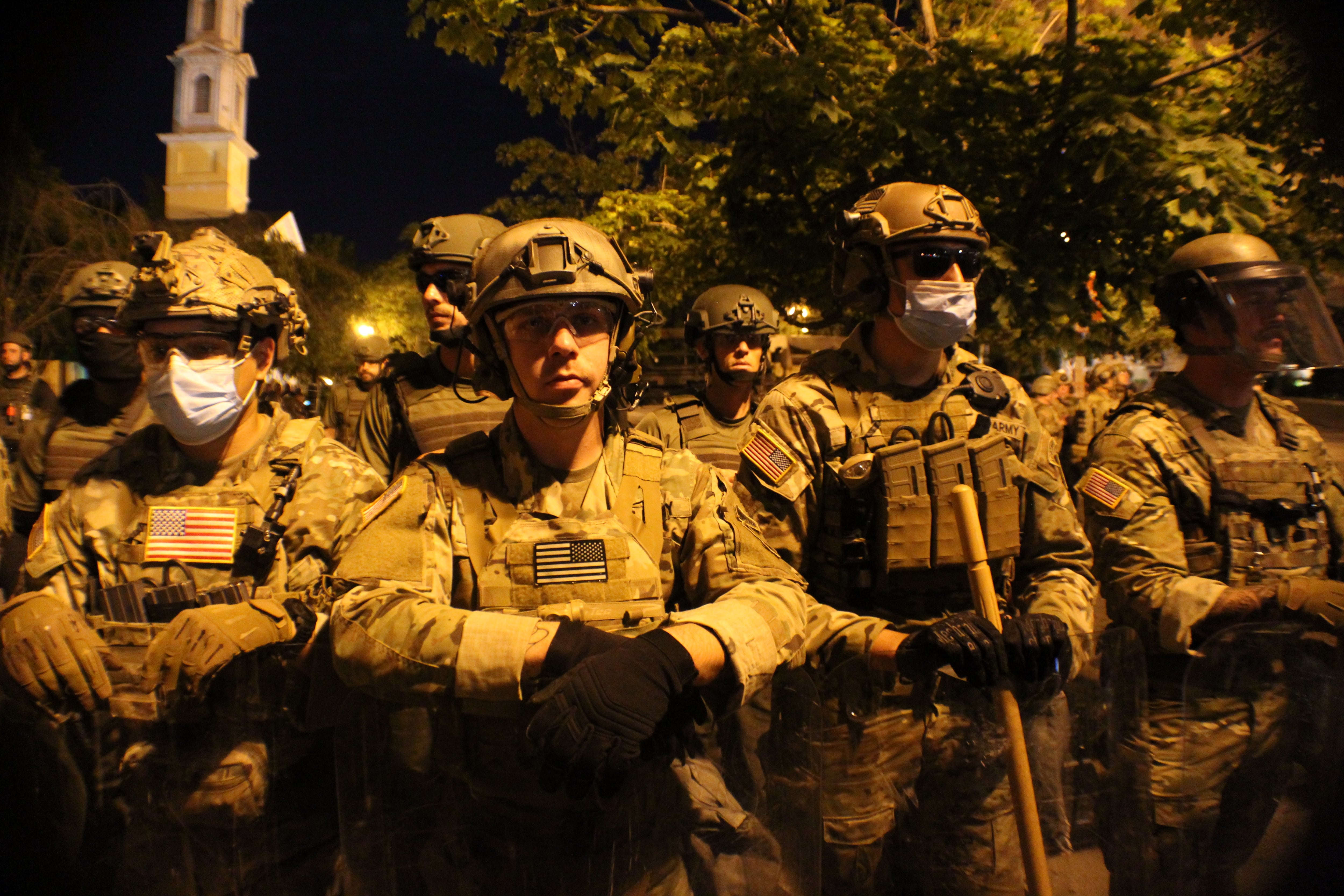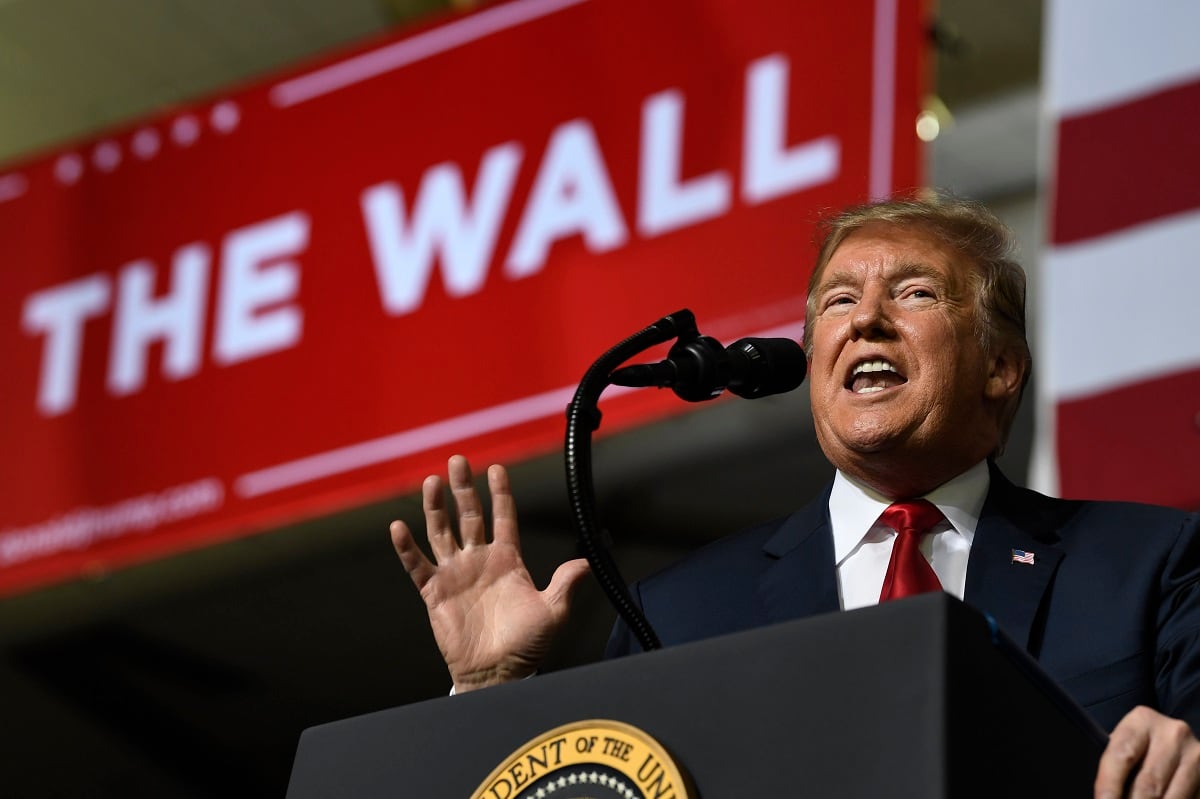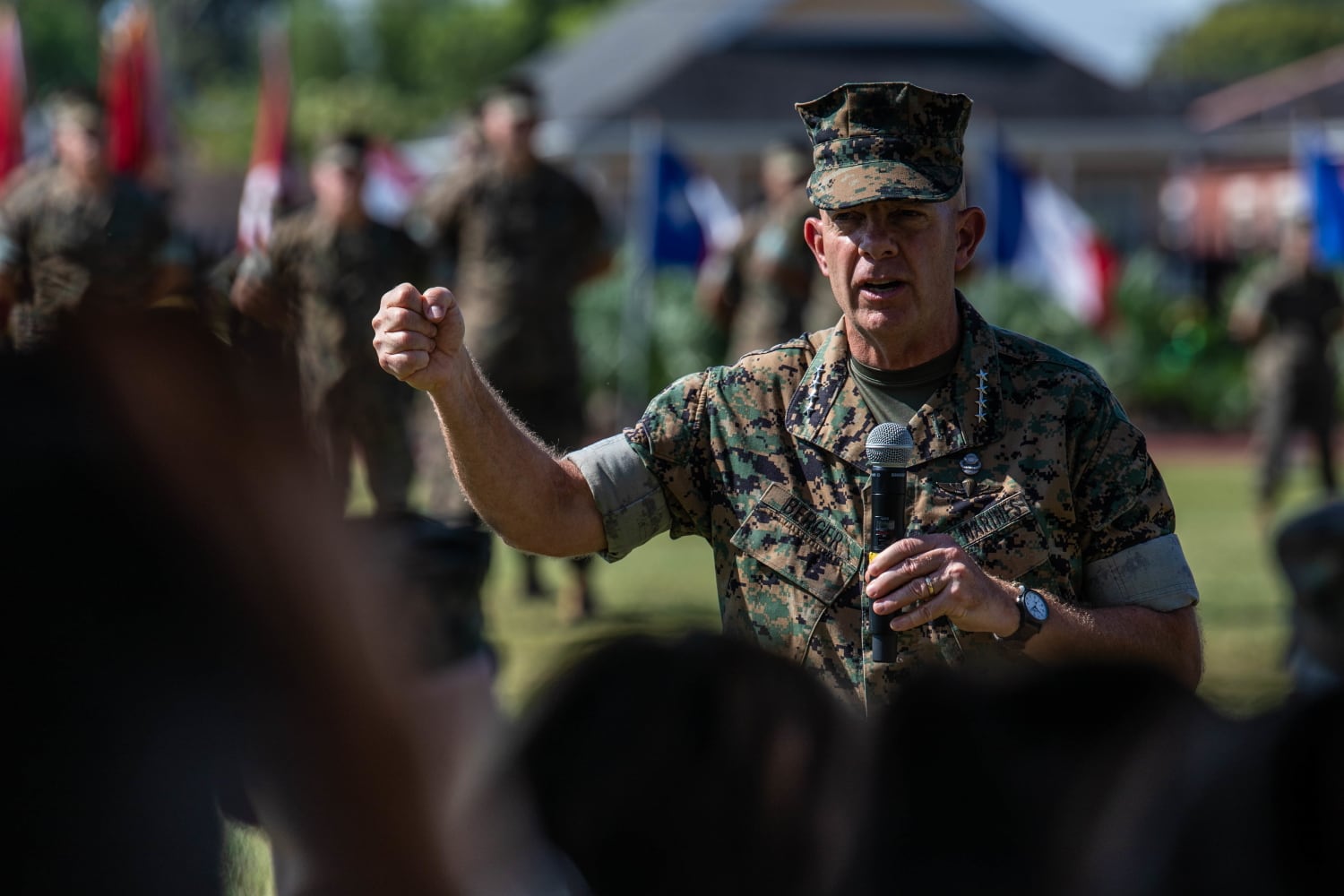The state of American politics and current events has reached a boiling point at which questions about using U.S. troops against their fellow citizens on American streets are making headlines.
The Defense Department has put out the message it doesn’t believe federal, active-duty troops should be putting down protests, but comments from President Donald Trump ― as well as the steady stream of National Guard and other body armor-clad forces streaming into Washington, D.C. ― has put the public on high alert.
It has also formed a link in the public’s mind between the use of military force and a partisan desire to squash demonstrations against what prosecutors say was the murder of George Floyd by Minneapolis police, as more reports and video surface of local law enforcement using tear gas, rubber bullets and other non-lethal weapons against peaceful demonstrators.
“I’ve worked very hard to keep the department out of politics, which is very hard these days, as we move closer and closer to an election," Defense Secretary Mark Esper told reporters Wednesday, acknowledging that the president’s policies are motivated by a desire to be re-elected. “And remaining apolitical means that there are times to speak up and times not to.”
In addition to vaguely alluding to federalizing troops, Trump has endorsed a suggestion from a Republican senator to send in active-duty troops.
“I am mobilizing all federal and local resources, civilian and military, to protect the rights of law abiding Americans,” Trump said Monday at the White House, citing the Insurrection Act of 1807. “Today I have strongly recommended to every governor to deploy the National Guard in sufficient numbers that we dominate the streets. Mayors and governors must establish an overwhelming presence until the violence is quelled.”
The Fort Campbell, Kentucky-based 101st Airborne Division is an active-duty unit, and could only be mobilized against American citizens if Trump invokes the Insurrection Act. Trump has also blamed rioting and looting on “radical left-wing” groups, adding more fuel to a partisan fire.
“The option to use active-duty forces in a law enforcement role should only be used as a matter of last resort, and only in the most urgent and dire of situations,” Esper said. “We are not in one of those situations now. I do not support invoking the Insurrection Act.”
On a state level, thousands of National Guard troops have been mobilized as a show of presence during protests. In Washington, D.C., guardsmen from half-a-dozen other jurisdications have been bused or flown in.
That includes some 19th Special Forces Group soldiers out of Utah,who stood sentry at Lafayette Square on Wednesday night, National Guard spokesman Master Sgt. Mike Houk confirmed to Military Times on Thursday.
Most appeared to be support personnel, though a handful sported the Special Forces tab earned by Green Berets.
“The reason they were selected and sent is because they were already prepared for deployment,” Houk said. “They were chosen for expedience, not their skillset.”
DoD has also called up some active-duty infantrymen and military police units for potential use in D.C., which as a federal territory, does not require the Insurrection Act for use of active-duty troops.
RELATED

Pentagon spokesman Jonathan Hoffman and D.C. National Guard officials have told Military Times that no active-duty troops were on the streets in D.C. last night.
They have remained on alert at Joint Base Andrews, Maryland, and Fort Belvoir, Virginia, rather than used against protests in the district.
Troops have not been the only ones caught in a political tangle.
Esper found himself in a particularly fraught political storm this week after footage circulated from his visit to the White House Monday evening.

After being summoned to brief the president, Esper and Joint Chiefs Chairman Army Gen. Mark Milley accompanied a group of advisers outside to see National Guard troops stationed outside the White House and to survey some protest damage ― or so Esper thought, he told reporters.
Instead, the group made a bee line for St. John’s Episcopal Church, which had been set aflame the night before.
“Well, I did know that we were going to the church,” Esper said. “I was not aware of a photo op happening.”
After Trump held up a Bible and made brief remarks about America soon making a “better than ever” comeback, Esper, Attorney General Bill Barr and others lined up to take a photo with the president.
“Look, I do everything I can to try and stay apolitical, trying to stay out of situations that may appear political,” Esper said. “And sometimes I’m successful at doing that. And sometimes I’m not as successful.”
RELATED

Beyond confronting protesters head on, the military is also grappling with how to talk about George Floyd’s killing, as well as the discussion of systemic racism it has ignited around the country.
Of more than 1 million active-duty service members, 40 percent are ethnic minorities, including 17 percent who are black. There has been consensus that leaders should address the violence against minorities, Esper told reporters Wednesday, but no clear plan for sharing messages of support or encouragement.
“First, let me say up front: the killing of George Floyd by Minneapolis is a horrible crime. The officers on the scene that they should be held accountable for his murder is a tragedy that we’ve seen repeat itself, too many times," he said in prepared remarks. “With great sympathy. I want to extend deepest of condolences to the family and friends of George Floyd, for me, and the department. Racism is real in America, and we must all do our very best to recognize it, to confront it, and to eradicate it.”
When asked why he waited the better part of a week to make that statement, Esper said he didn’t feel the necessity until the larger national conversation hit a fever pitch.
“... most times, we don’t speak about these matters as a department,” he said. “But as events have unfolded over the past few days, it became very clear that this is becoming a very combustible national issue.”
He wanted to craft his own memo, said. It went out Wednesday, though it did not mention the death of George Floyd. Neither did a memo from Milley, whose message is dated June 2.
“As I reminded you in February, I ask that you remember at all times our commitment as a Department and as public servants to stay apolitical in these turbulent days,” Esper wrote. “For well over two centuries, the U.S. military has earned the respect of the American people by being there to protect and serve all Americans.”
RELATED

He did not acknowledge other Pentagon leaders who had released statements earlier, and with more specific language about the racial injustice they wanted to address.
Chief Master Sergeant of the Air Force Kaleth Wright was the first military senior leader to speak out, in a long Twitter thread posted Monday.
“Who am I?” Wright began, before listing unarmed black men and boys who have been killed by police. “I am a Black man who happens to be Chief Master Sergeant of the Air Force. I am George Floyd...I am Philando Castile, I am Michael Brown, I am Alton Sterling, I am Tamir Rice.”
Air Force Chief of Staff Gen. David Goldfein followed suit hours later, as did senior leaders from each of the other four branches within DoD in the following days.
Meghann Myers is the Pentagon bureau chief at Military Times. She covers operations, policy, personnel, leadership and other issues affecting service members.




